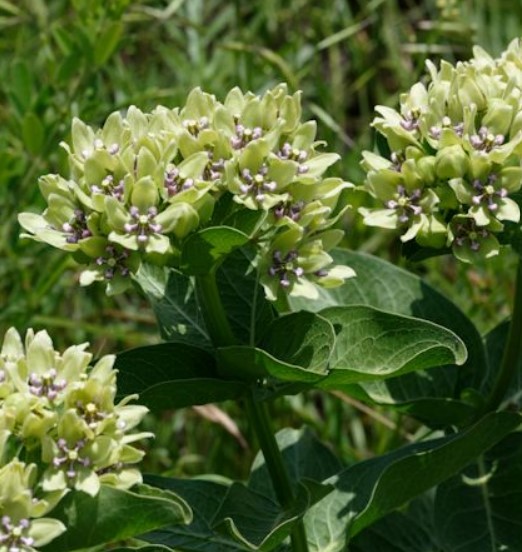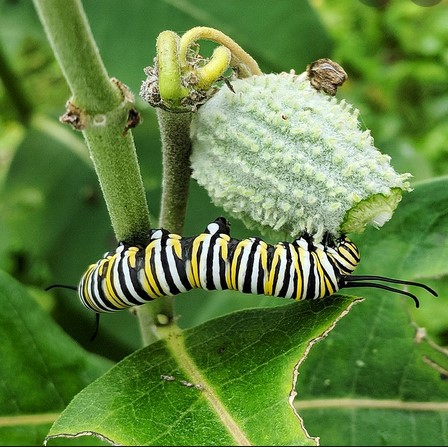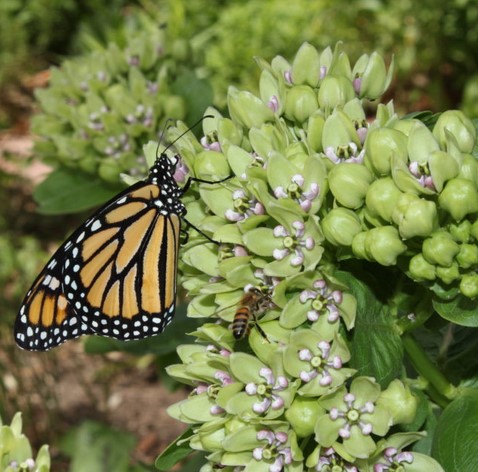Milkweed ‘Green’
Asclepias viridis



Characteristics
- Type: Perennial
- Zone: 5 – 9
- Height: 1.5 – 2.5 Feet
- Spread: 1 – 2 Feet
- Bloom Time: April – September
- Bloom Description: Green with Purple Hood
- Sun: Full Sun
- Water: Dry – Medium
- Maintenance: Low
- Flower: Showy
- Attracts: Butterflies, Bees
- Tolerate: Deer, Drought
- Texas Native
Culture
Milkweed ‘Green’ is easily grown in average, dry to medium moisture, well-drained soils in full sun. Drought tolerant. Easily grown from seed, and will self-seed in the landscape if seed pods are not removed prior to splitting open. Milkweed ‘Green’ plants will also spread by rhizomes, but are not considered to be invasive.
Noteworthy Characteristics
Asclepias viridis, commonly called green or green-flowered milkweed, is an erect to sometimes decumbent glabrous perennial that grows to 20-30″ tall on usually upright stems clad with mostly alternate, short-stalked, pointed, ovate-lanceolate, pale green leaves (to 2-5” long). Stems and leaves exude a milky sap when cut or bruised. It is native to glades, prairies, pastures, fields and roadsides from Ohio to Nebraska south to Florida and Texas Tiny green flowers with purple hoods bloom in many-flowered axillary and terminal umbels from May to June. Each tiny flower (to 1” long) has 5 upright pale green corolla lobes (petals) and 5 purple hoods. Horns are absent. Flowers give way to seed pods (to 5” long) which split open when ripe releasing numerous silky-tailed seeds for dispersal by the wind. Seed pods are valued in dried flower arrangements. Flowers are a nectar source for many butterflies, and leaves are a food source for monarch butterfly, queen, and soldier larvae (caterpillars). Additional common names include green antelope horn (curved green seedpod resembles an antelope horn) and spider milkweed (white crab spider lives on this plant).
Problems
No serious insect or disease problems.
Garden Uses
Butterfly gardens, meadows, prairies, or naturalized/native plant areas. Borders.